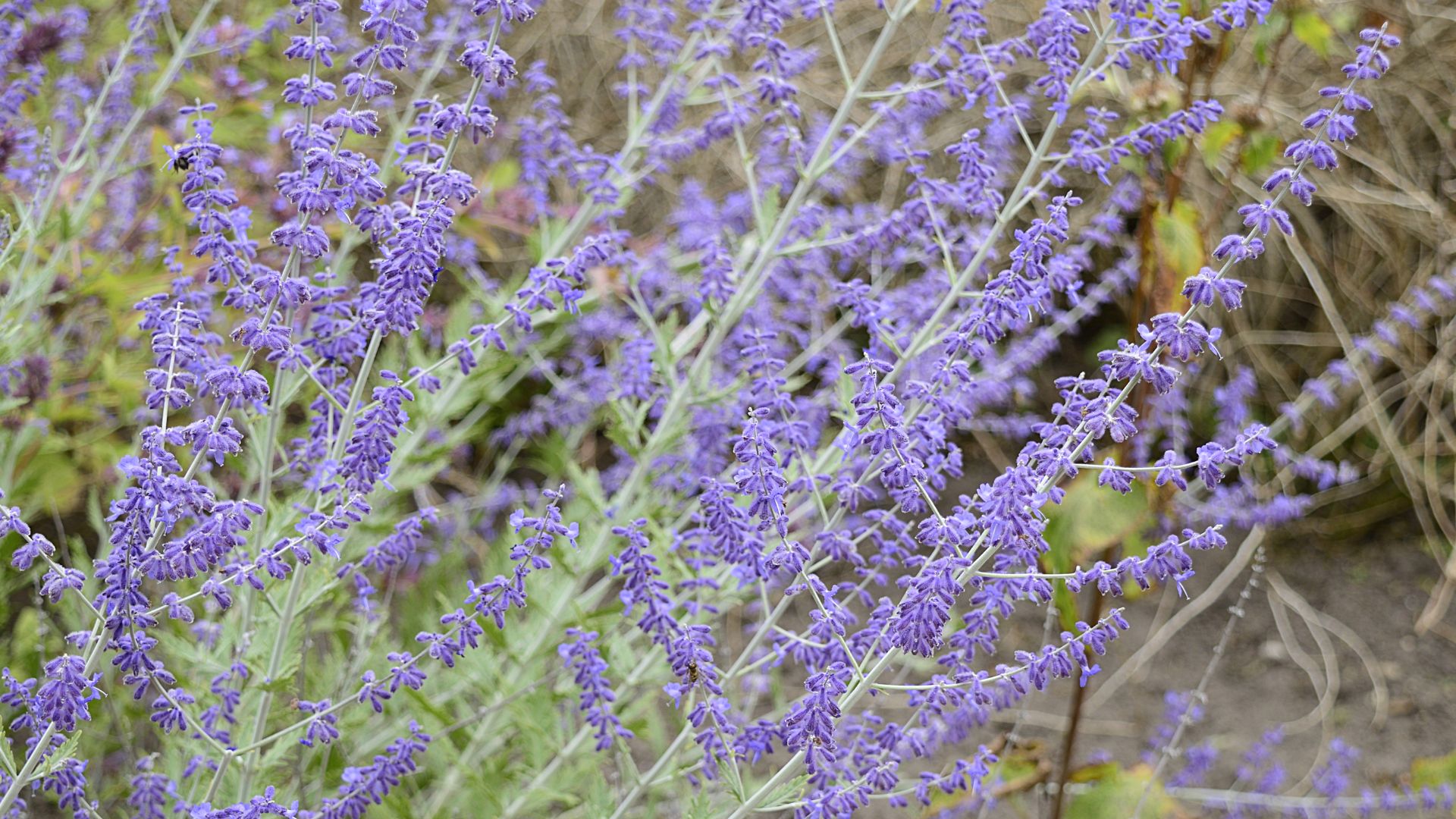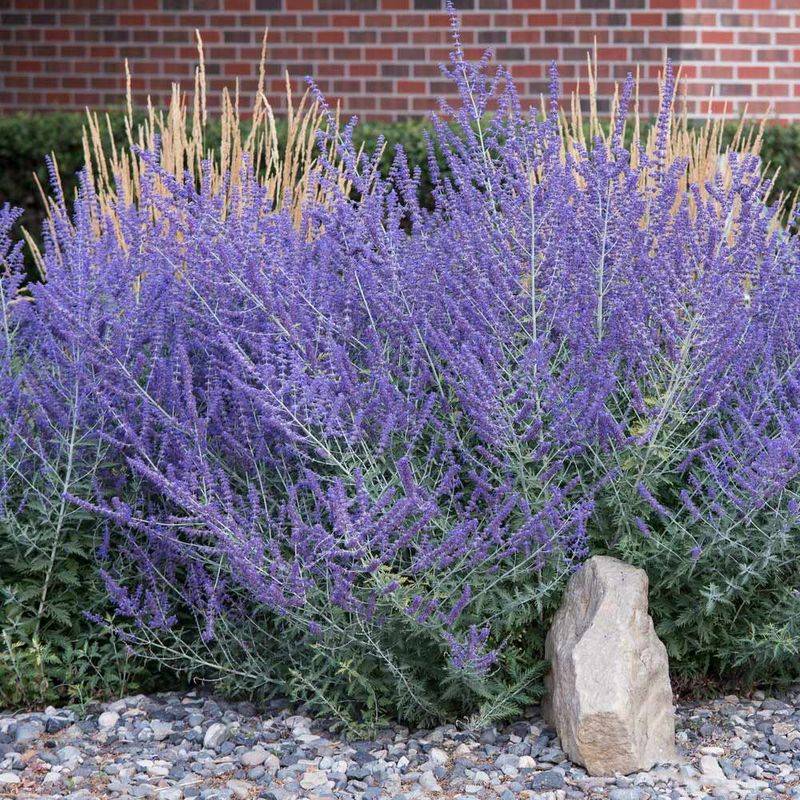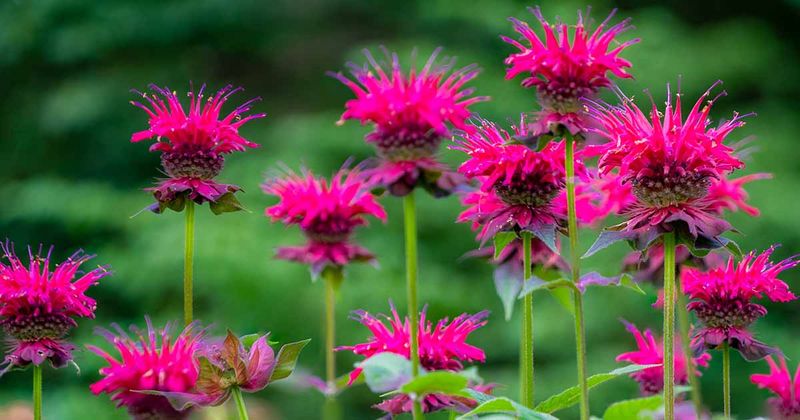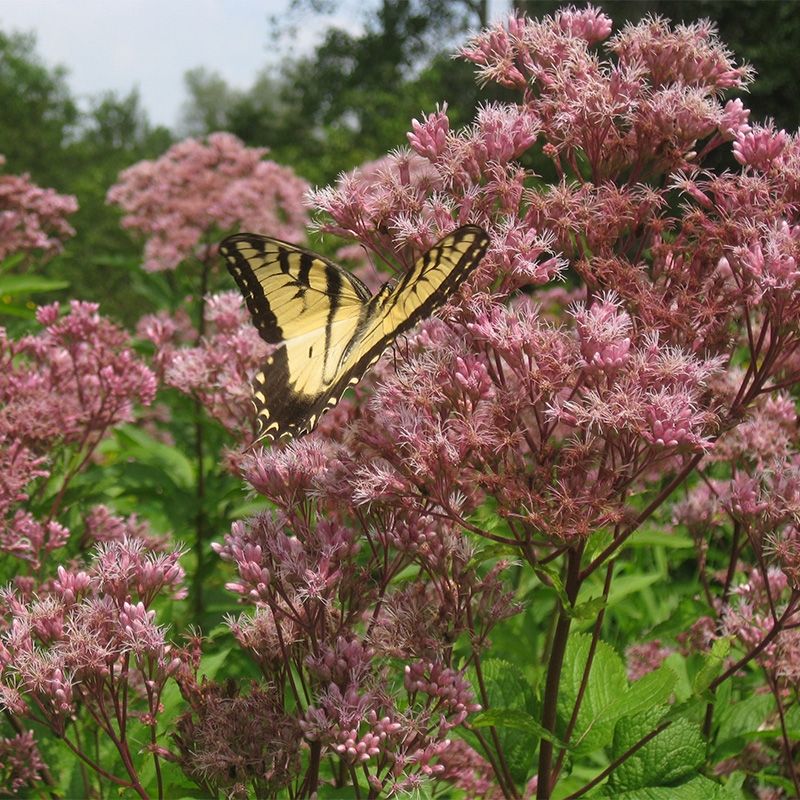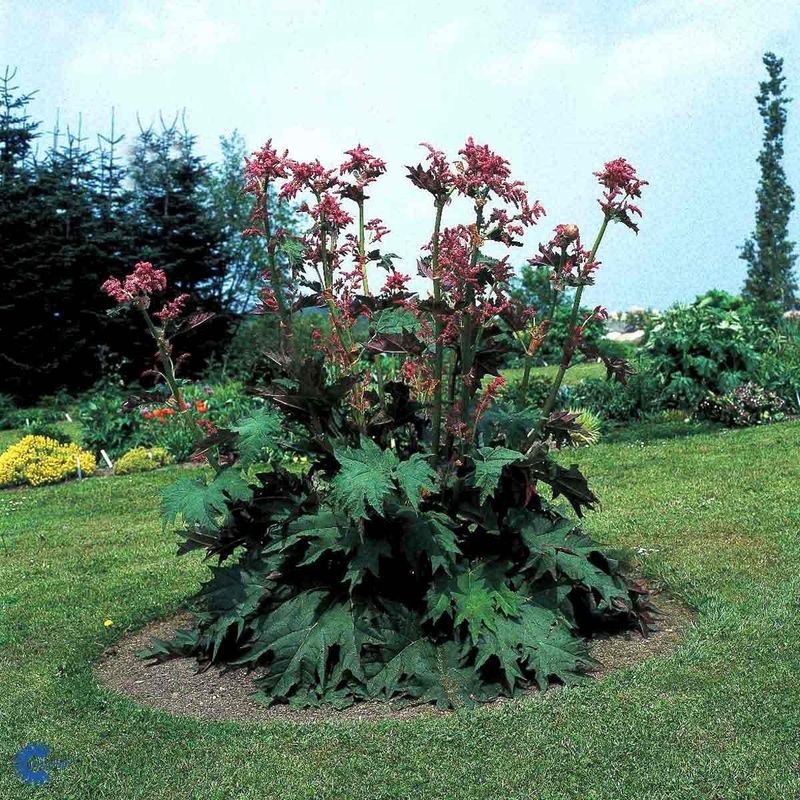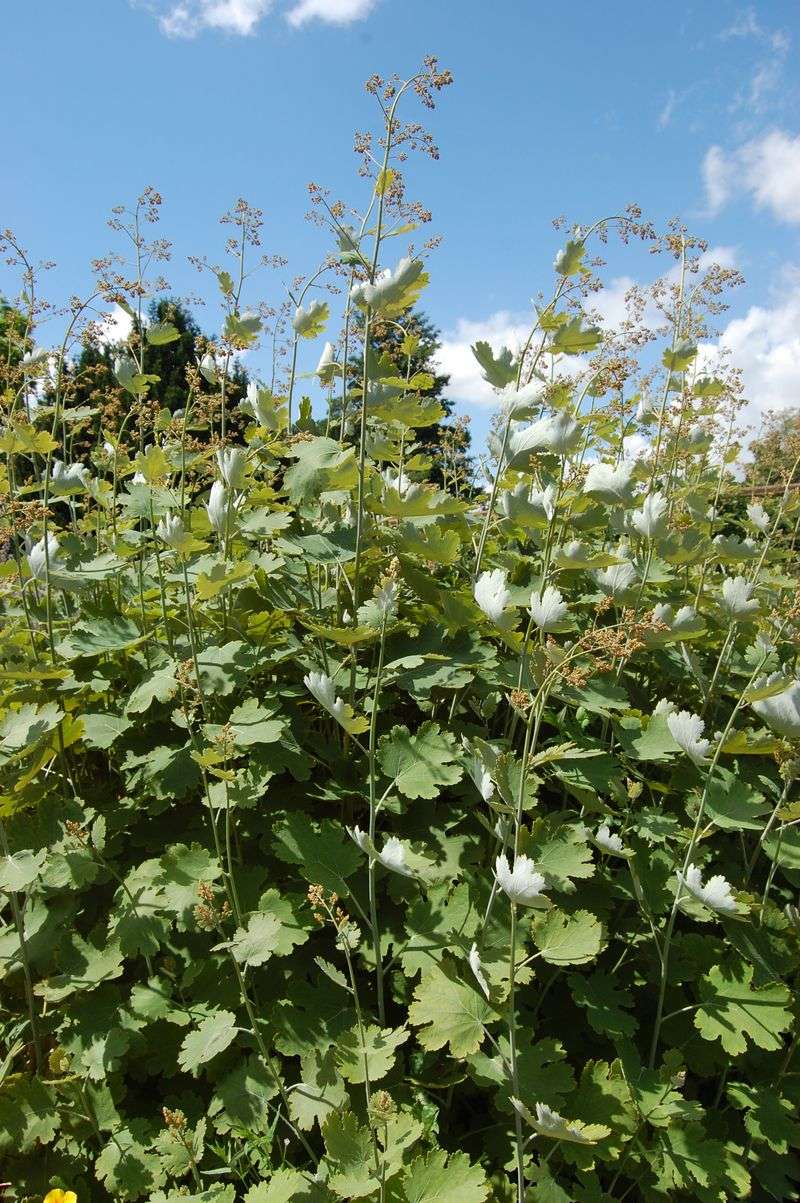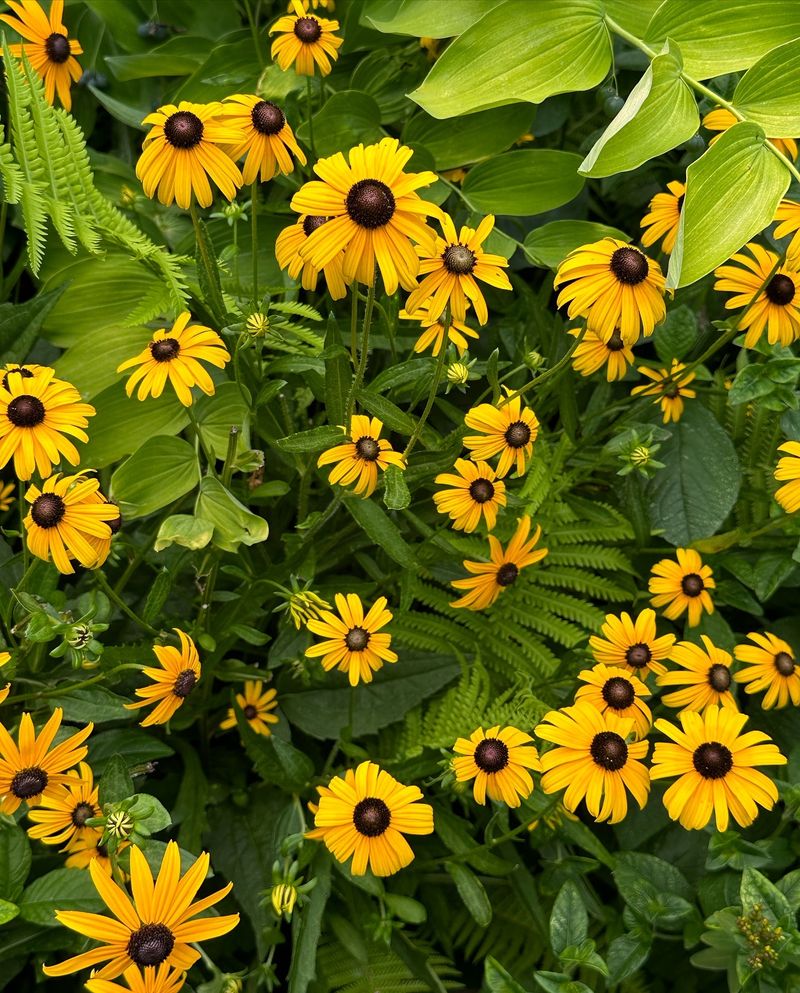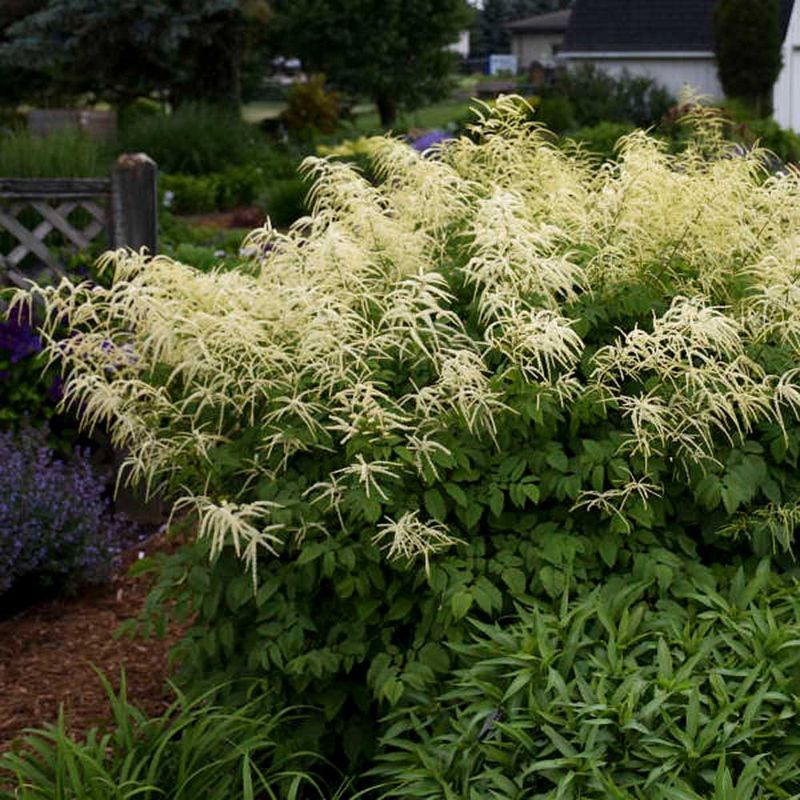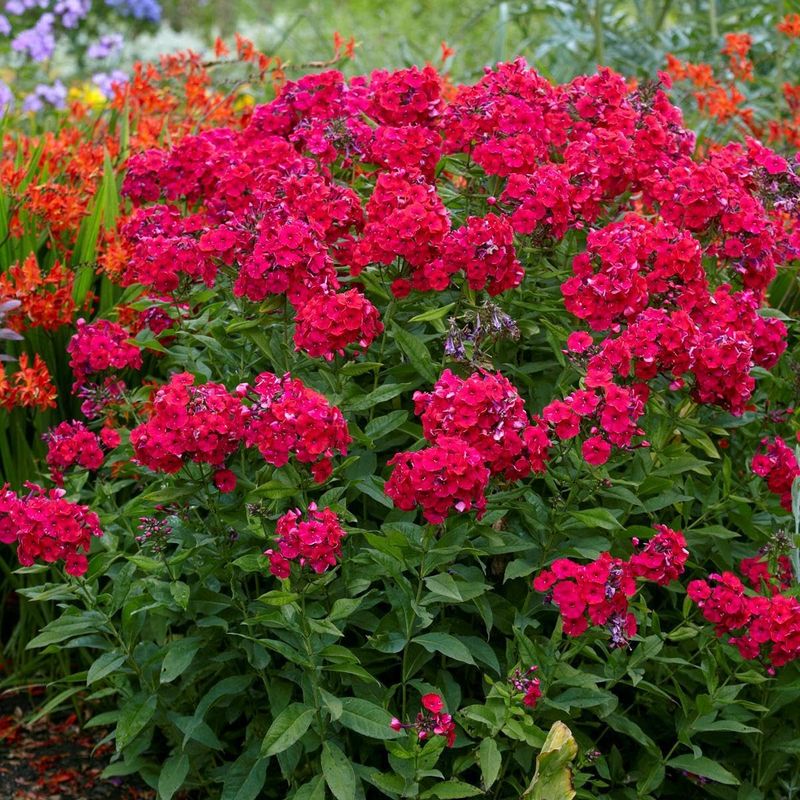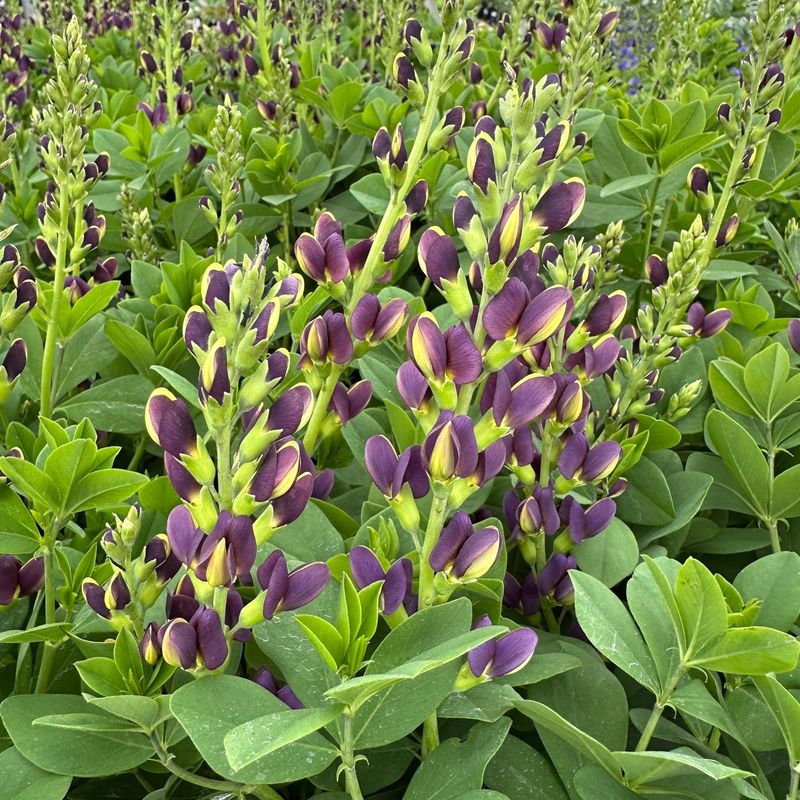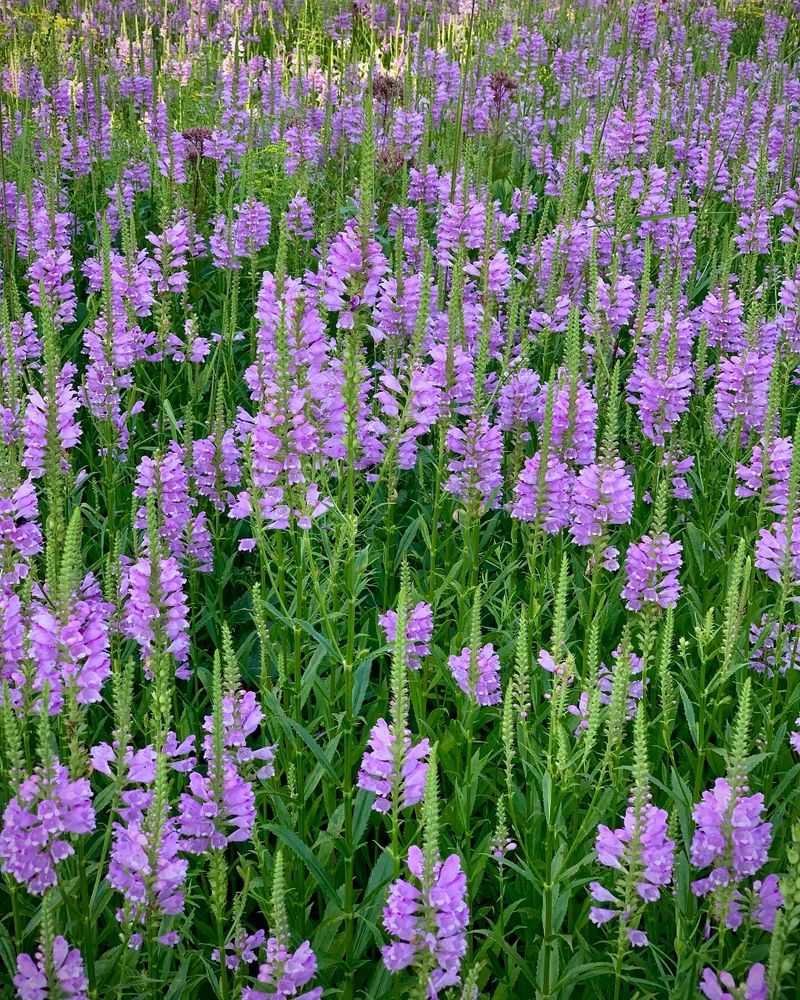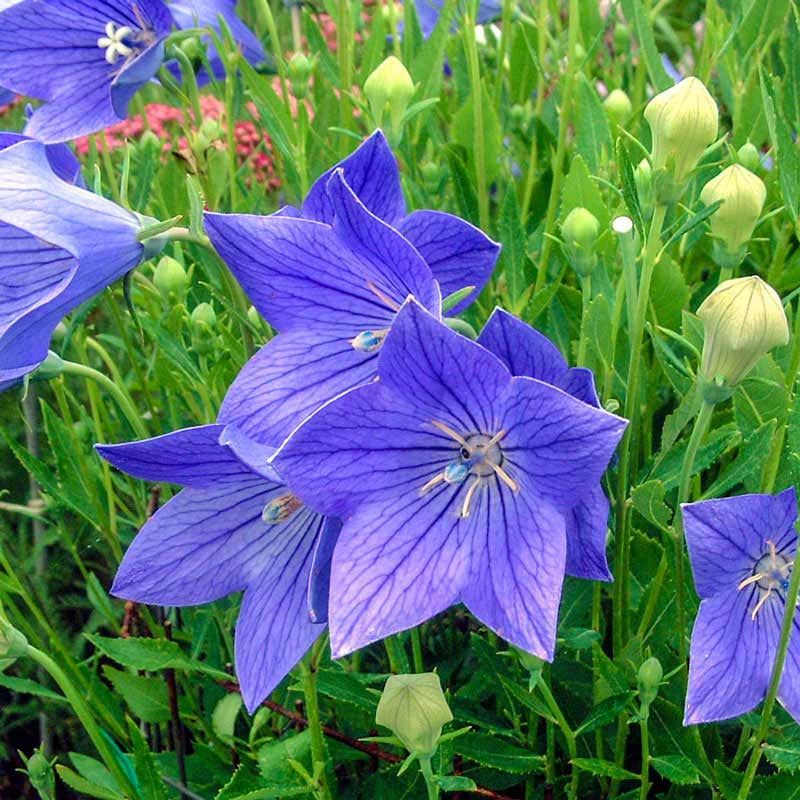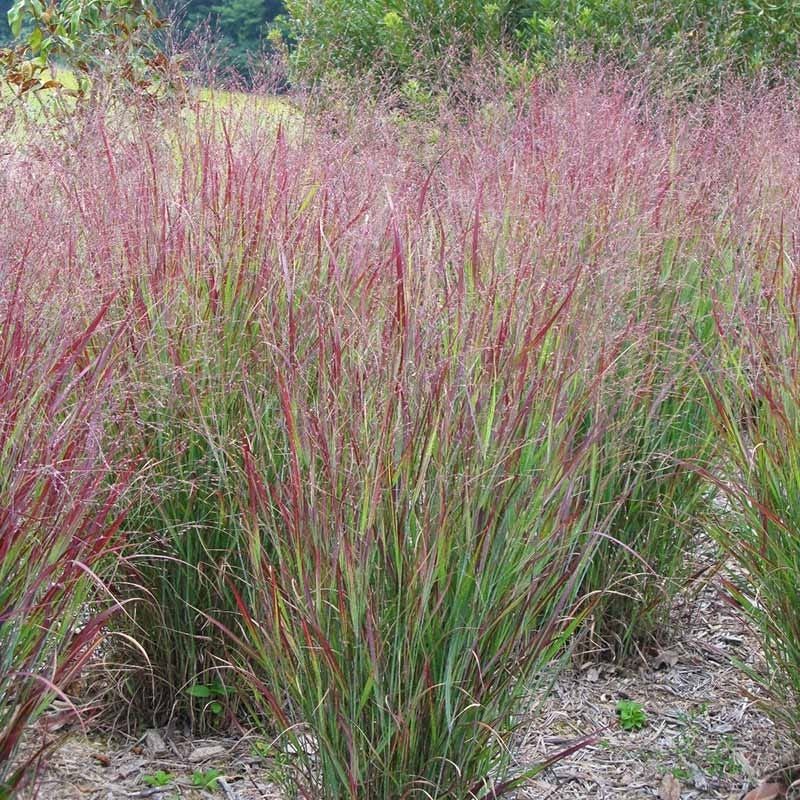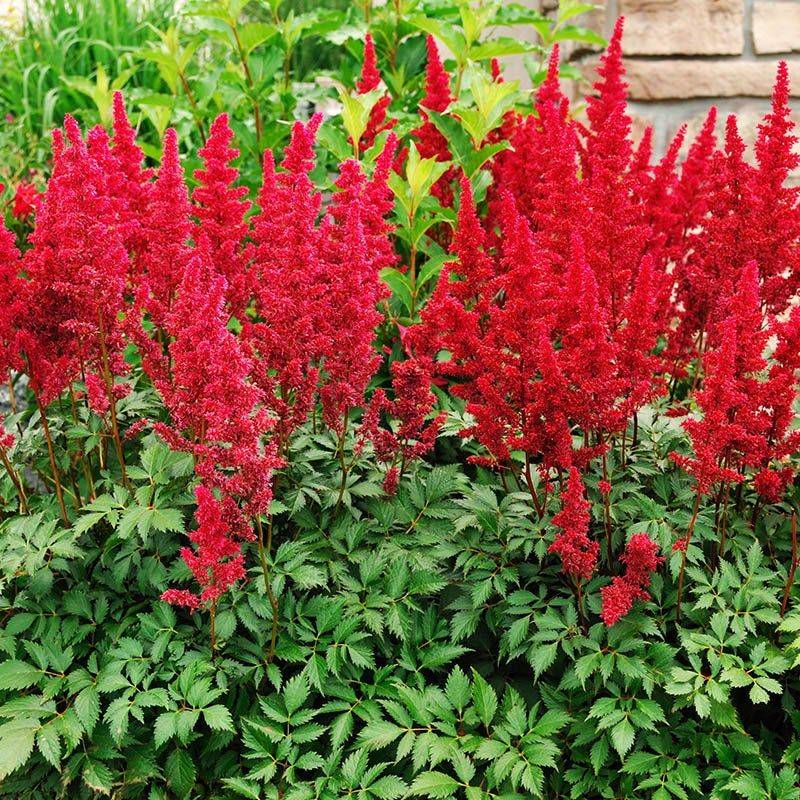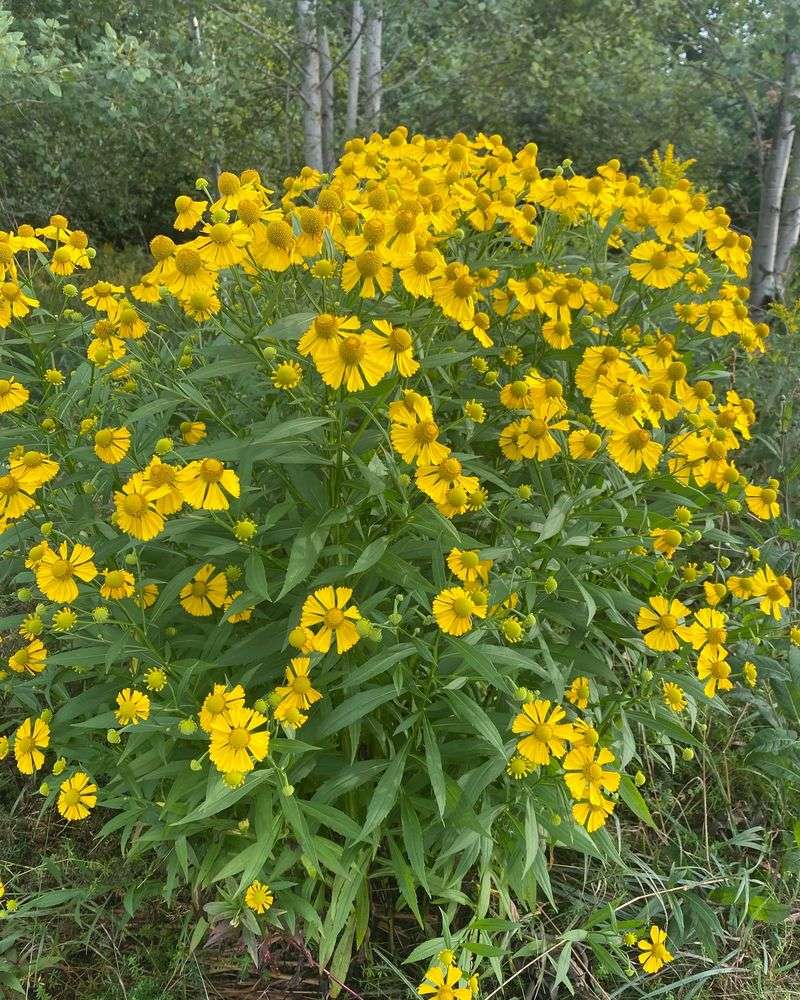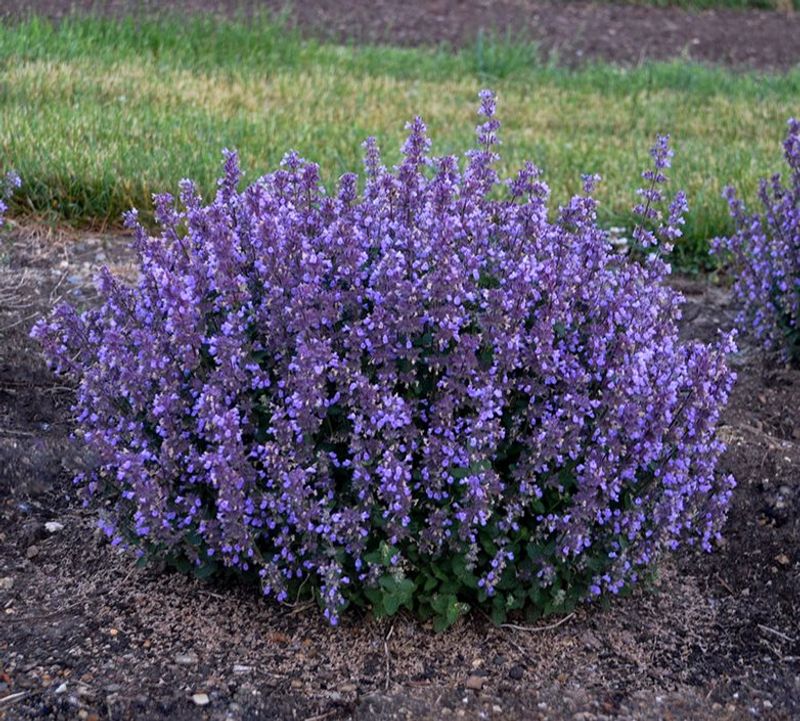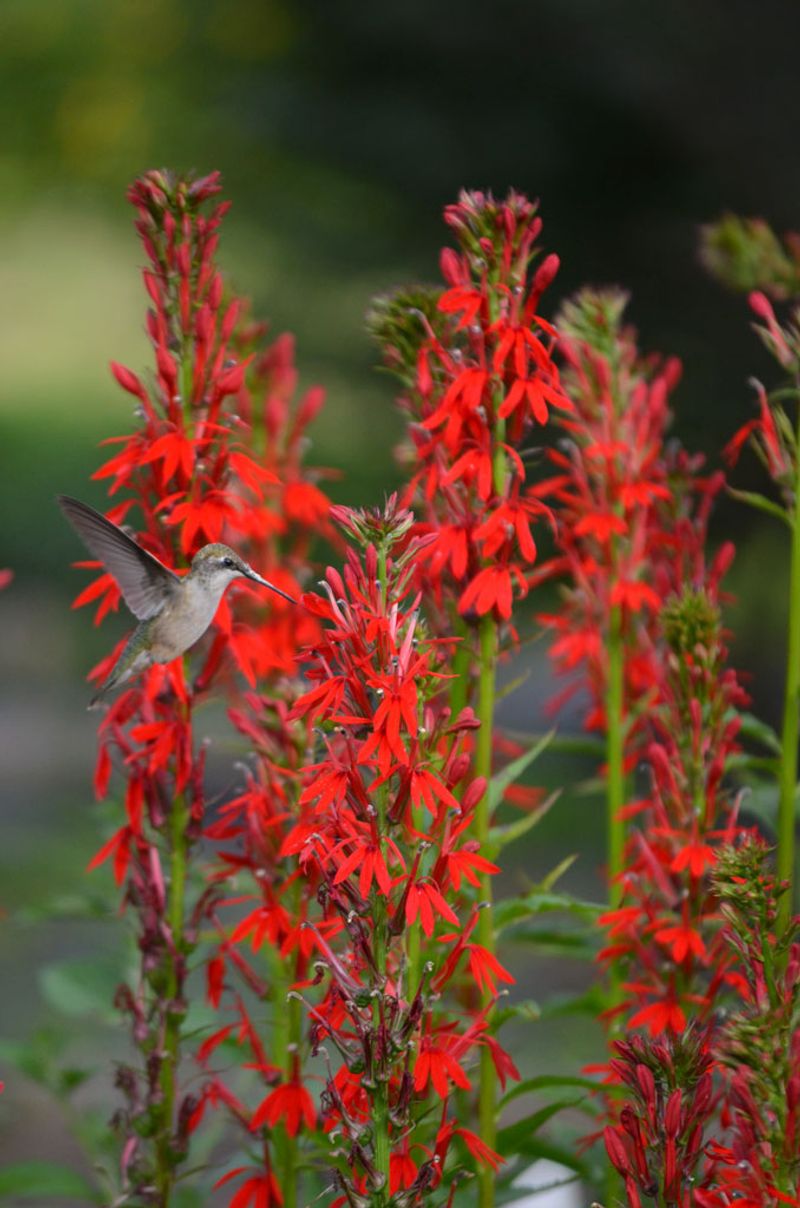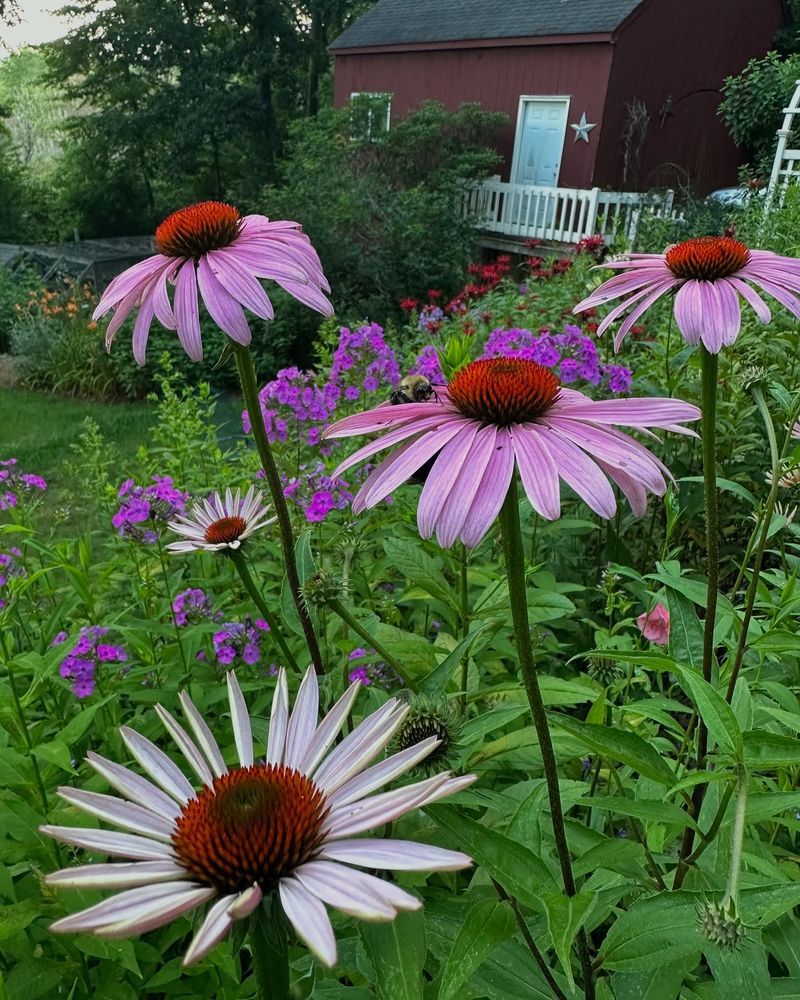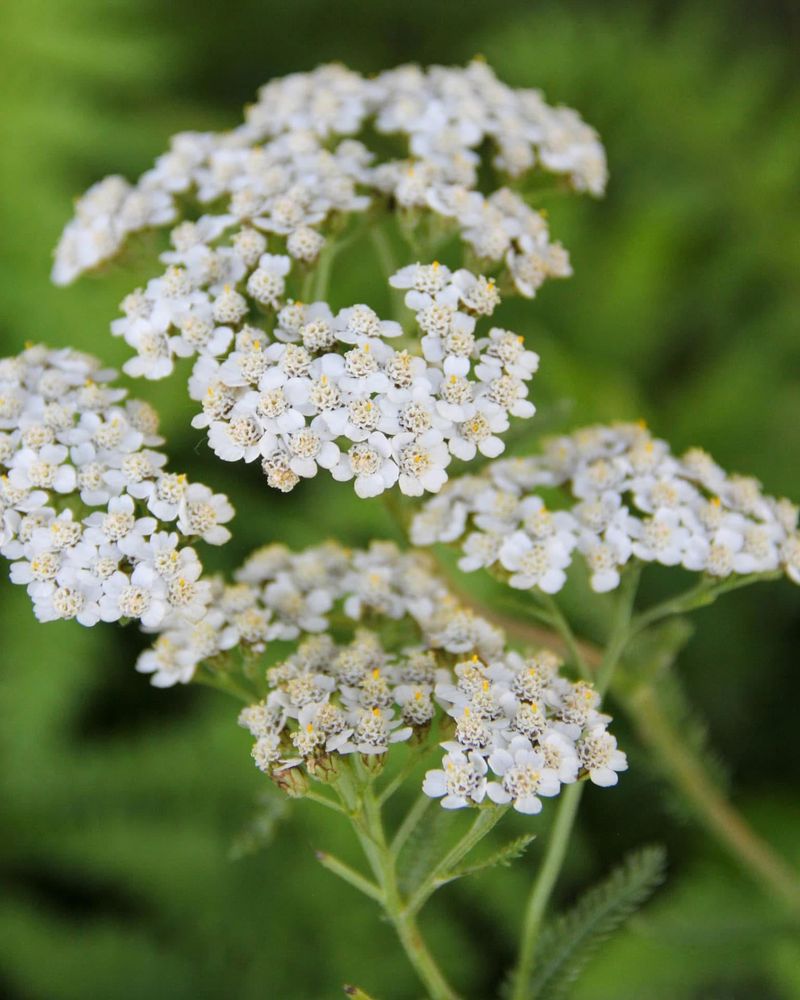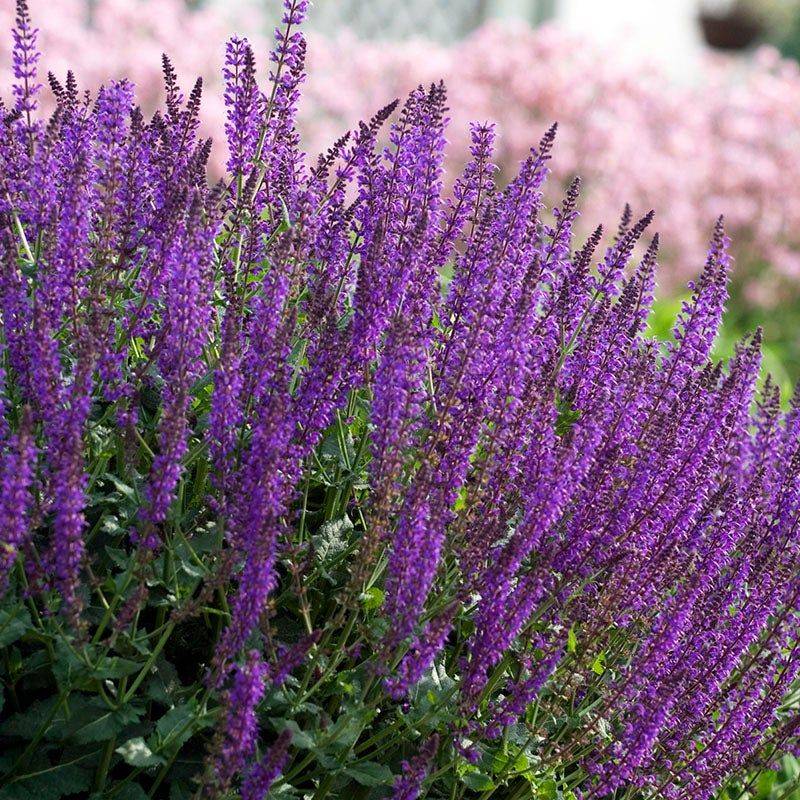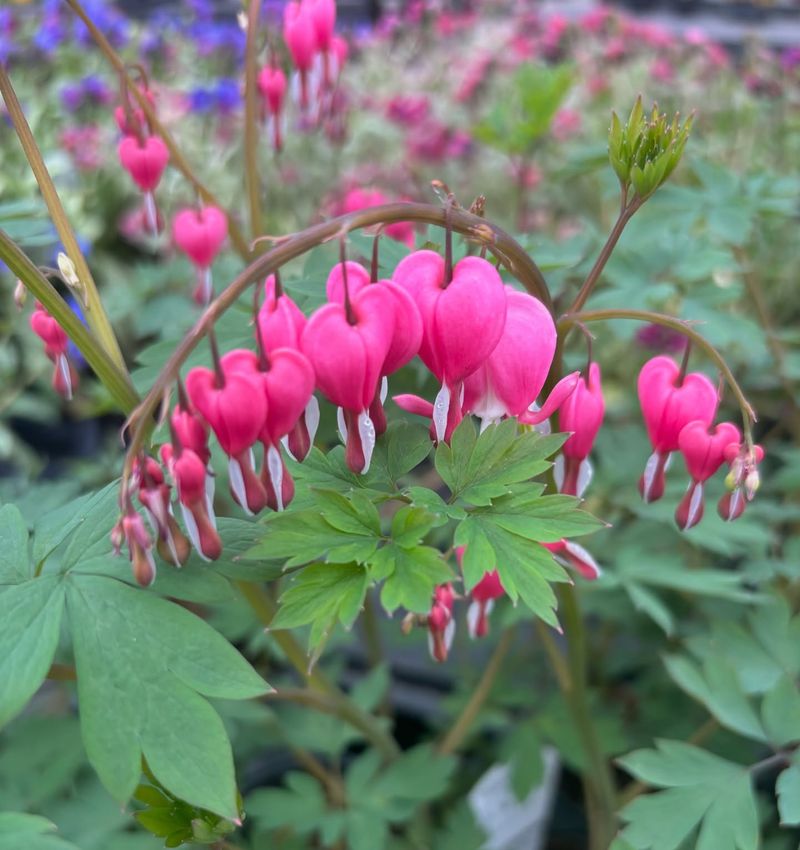Gardening feels a little magical when you tuck a tiny plant into the soil and watch it explode with growth just weeks later. I still get excited seeing bare spots turn into lush corners of green and bloom before summer’s even halfway through.
Some perennials are especially rewarding this way—starting small, but quickly becoming showstoppers. They’re perfect if you’re like me and don’t love waiting years for a garden to fill in.
These fast growers bring instant impact, giving your space that full, beautiful look without the long wait. Let me show you some of my favorites that really deliver in one season.
1. Russian Sage (Perovskia atriplicifolia)
Starting as a modest cluster of silvery stems in spring, Russian Sage explodes into a billowing cloud of lavender-blue flowers by midsummer. The feathery foliage emerges slowly but gains momentum quickly once temperatures warm.
Drought-tolerant and deer-resistant, this perennial thrives in poor soil conditions where other plants struggle. Give it plenty of space – what begins as a 6-inch seedling can reach 3-4 feet tall and wide by season’s end!
2. Bee Balm (Monarda didyma)
Bee Balm transforms from unassuming spring shoots into a pollinator paradise by July. The mint family member spreads through underground rhizomes, quickly colonizing bare spaces with aromatic foliage and distinctive crown-like blooms.
Hummingbirds flock to the tubular flowers while butterflies can’t resist the nectar-rich blossoms. Plant this native perennial in spring, and you’ll have a 3-foot tall flowering spectacle by summer’s peak, with a spread that easily triples its original footprint.
3. Joe Pye Weed (Eutrochium purpureum)
Unassuming spring growth belies Joe Pye Weed’s impressive potential. From modest 8-inch sprouts emerge towering 7-foot stalks crowned with fluffy mauve flower clusters that butterflies adore. Native to moist meadows, this gentle giant appreciates regular watering during establishment.
The vanilla-scented blooms appear in late summer when many other perennials have finished their show. Despite its intimidating adult size, this perennial remains well-behaved, forming clumps rather than aggressively spreading.
4. Ornamental Rhubarb (Rheum palmatum)
Ornamental Rhubarb bursts from the earth in spring with prehistoric vigor. Tiny crumpled leaves unfurl into massive dinner-plate-sized foliage atop thick, reddish stalks that command attention in any landscape. Unlike its edible cousin, this variety is grown purely for dramatic effect. A single plant requires ample space as it rockets from a small division to a 5-foot-wide statement piece. The burgundy flower spikes add vertical drama, rising 6 feet above the already impressive foliage canopy.
5. Plume Poppy (Macleaya cordata)
Garden novices often underestimate Plume Poppy’s explosive growth potential. This architectural beauty emerges from dormancy with deceptive restraint before launching skyward at an astonishing pace.
Powdery blue-green leaves create a tropical effect, while airy plumes of cream flowers dance above the foliage by midsummer. One small root division can transform into a substantial 6-foot-tall specimen within weeks. Careful placement is essential – this vigorous grower spreads through underground runners and may overwhelm timid neighbors.
6. Black-Eyed Susan (Rudbeckia fulgida)
Spring’s modest rosettes of fuzzy leaves give no hint of Black-Eyed Susan’s summertime exuberance. This native wildflower explodes with golden daisy-like blooms that brighten gardens from July through September. First-year plants often surprise gardeners with their rapid expansion, tripling in width by August.
The cheerful flowers attract beneficial insects while standing up to heat and drought. Deadheading spent blooms encourages continuous flowering, extending the colorful display well into fall when many other perennials have faded.
7. Goat’s Beard (Aruncus dioicus)
Goat’s Beard emerges from winter dormancy with unassuming sprouts that provide no clue to its impending magnificence. By June, this native woodland plant transforms into a fountain of feathery white plumes rising 4-6 feet tall.
Perfect for shady spots where other perennials struggle, its compound leaves create a lush backdrop even after flowers fade. Male plants produce showier blooms than their female counterparts. A single small division planted in spring can develop into a substantial architectural specimen by summer’s end.
8. Garden Phlox (Phlox paniculata)
Garden Phlox defies its humble spring beginnings with remarkable summer growth. The slender stems that emerge in April soon develop into sturdy 3-foot stalks topped with fragrant flower clusters in shades from white to purple.
Butterflies and hummingbirds flock to the sweet nectar, while gardeners appreciate the weeks of colorful blooms. Good air circulation prevents powdery mildew issues that sometimes affect dense plantings. From a small nursery container, a single plant can expand to fill a 2-foot diameter space by its first flowering season.
9. False Indigo (Baptisia australis)
False Indigo begins each spring with pencil-thin purple shoots that erupt from the ground with surprising vigor. Within weeks, these modest sprouts develop into a substantial shrub-like mound of blue-green foliage. Lupine-like purple flower spikes appear in late spring, followed by interesting black seed pods that rattle in autumn breezes.
While first-year plants develop slowly, established specimens triple in size after dormancy, eventually forming impressive 4-foot-wide clumps. The deep taproot makes this drought-tolerant native difficult to transplant but incredibly resilient once established.
10. Obedient Plant (Physostegia virginiana)
Obedient Plant earns its name from flowers that stay in position when moved, but there’s nothing obedient about its growth habit! Spring’s innocent-looking shoots rapidly develop into a robust display of pink snapdragon-like blooms on 3-foot stems.
Native to moist meadows, this perennial spreads enthusiastically through underground rhizomes. A single nursery pot can transform into a substantial colony by summer’s end. The late-season flowers provide valuable nectar for pollinators when many other plants have finished blooming.
11. Balloon Flower (Platycodon grandiflorus)
Balloon Flower’s late spring emergence often worries novice gardeners who fear their plant didn’t survive winter. Patience pays off when the distinctive shoots finally appear, quickly developing into 2-foot stalks adorned with buds that swell like balloons before bursting open into starry blooms.
Available in blue, pink, or white varieties, these charming perennials triple in width each season until reaching mature size. Unlike aggressive spreaders, Balloon Flower forms a well-behaved clump that expands gradually year after year.
12. Switchgrass (Panicum virgatum)
Switchgrass begins each growing season as a modest tuft of green blades barely distinguishable from lawn grass. By August, this native prairie grass transforms into a majestic 5-foot fountain of slender stems topped with airy seed heads that catch the light.
The vertical growth happens with remarkable speed once summer temperatures arrive. Fall brings spectacular color changes as the foliage shifts to gold, orange, and burgundy tones. Modern cultivars like ‘Shenandoah’ develop red-tinted foliage by midsummer, adding months of visual interest to the landscape.
13. Astilbe (Astilbe x arendsii)
Astilbe emerges in spring with delicate, ferny foliage that gives little indication of the spectacular display to come. By early summer, flower stalks rocket upward, bearing feathery plumes in shades ranging from white to deep crimson.
Perfect for brightening shady spots, these moisture-loving perennials quickly fill in bare areas with their expanding root systems. A single division can triple its footprint within one growing season when provided with rich soil and adequate water.
The dried flower plumes remain attractive through winter, adding structural interest to the dormant garden.
14. Sneezeweed (Helenium autumnale)
Don’t let the unfortunate name fool you—Sneezeweed won’t trigger allergies but will trigger admiration as it explodes from a small spring rosette into a 4-foot-tall autumn spectacle. The daisy-like flowers in gold, orange, and russet tones attract butterflies and extend the garden’s color season.
Named for its former use as snuff, not because it causes sneezing, this native perennial triples in width each season until reaching mature size. Pinching stems in June encourages branching and prevents flopping, resulting in even more of the cheerful blooms that brighten the late-season landscape.
15. Catmint (Nepeta x faassenii)
Catmint’s early spring growth appears modest—small gray-green leaves that barely hint at the lavender cloud to come. By June, the plant transforms into a billowing mound of aromatic foliage covered with purple-blue flower spikes that bees can’t resist.
Cutting back the first flush of blooms encourages a repeat performance later in summer. Drought-tolerant and deer-resistant, this easy-care perennial spreads quickly to form 3-foot-wide clumps within its first season. The gray foliage creates a lovely contrast with pink roses and other garden companions.
16. Cardinal Flower (Lobelia cardinalis)
Cardinal Flower begins as a modest rosette of leaves that gives no hint of the fireworks display to come. By late summer, brilliant scarlet spikes rise 3-4 feet tall, creating a vertical exclamation point in the garden. Hummingbirds find the tubular flowers irresistible, hovering nearby from dawn until dusk.
Native to stream banks and wet meadows, this perennial appreciates consistent moisture. A small spring division can develop into a substantial clump by flowering time, with dozens of blazing red flower stalks arising from the expanding root system.
17. Coneflower (Echinacea purpurea)
Coneflower seedlings start as inconspicuous sprouts that rapidly develop into sturdy plants crowned with distinctive blooms. The daisy-like flowers feature prominent cone-shaped centers surrounded by colorful petals that pollinators adore. Modern hybrids offer rainbow color options beyond the traditional purple, including yellows, oranges, and even greens.
From a small nursery container, a single plant can expand to fill a 2-foot-wide space by summer’s end. Leaving the seed heads standing provides winter food for goldfinches and other birds.
18. Yarrow (Achillea millefolium)
Yarrow’s feathery foliage emerges early in spring, quickly forming a ground-hugging mat that explodes upward by June. Flat-topped flower clusters in shades from white to deep rose crown the 2-3 foot stems, attracting beneficial insects to the garden.
Ancient herb gardens valued this plant for its medicinal properties, while modern gardeners appreciate its drought tolerance and easy care. A single division can spread to cover several square feet within one growing season. The flowers dry beautifully for arrangements, retaining their color for months.
19. Meadow Sage (Salvia nemorosa)
Meadow Sage transforms from unassuming spring growth into a purple haze of flower spikes by early summer. The compact mounds of wrinkled foliage serve as launching pads for dozens of bloom stalks that attract bees and butterflies.
Shearing plants after the first flowering encourages additional bloom cycles throughout summer. Heat and drought tolerant, this European native expands quickly, with a single plant tripling its width by season’s end. Popular varieties like ‘May Night’ and ‘Caradonna’ offer improved flowering and more upright habits.
20. Bleeding Heart (Dicentra spectabilis)
Bleeding Heart performs a disappearing act that amazes new gardeners. Seemingly overnight, bare soil erupts with reddish stems that unfurl into elegant blue-green foliage adorned with dangling heart-shaped blooms in pink or white.
The rapid spring growth sees plants reaching their full 3-foot height and width within weeks. After flowering, plants gradually yellow and die back completely by midsummer—a normal cycle called summer dormancy. Mark the spot to avoid disturbing the resting plant, which will return with even greater vigor next spring.
21. Ligularia (Ligularia dentata)
Ligularia may start small, but with adequate moisture and shade, it becomes a garden giant by midsummer. The large, rounded leaves create bold texture, while bright golden-orange daisy-like flowers rise above the foliage on tall stalks.
Especially striking cultivars like ‘Desdemona’ or ‘The Rocket’ can reach 3 to 5 feet tall and just as wide in one season when grown in rich, consistently moist soil. This dramatic perennial brings immediate structure and color to shady, damp areas where other plants often fail.
22. Japanese Anemone (Anemone × hybrida)
Despite its delicate appearance, Japanese Anemone grows with surprising speed. Emerging late in spring, it quickly sends up tall, wiry stems topped with fluttering flowers in white or pink from late summer into fall.
Given just one season, a single small transplant can expand into a 2- to 3-foot clump, thanks to its underground rhizomes. Best planted in partial shade with consistent moisture, this perennial offers graceful movement and long-lasting blooms just when many others are winding down.

